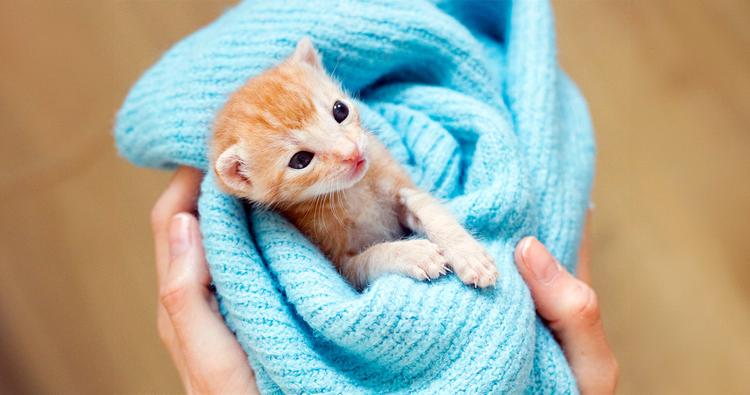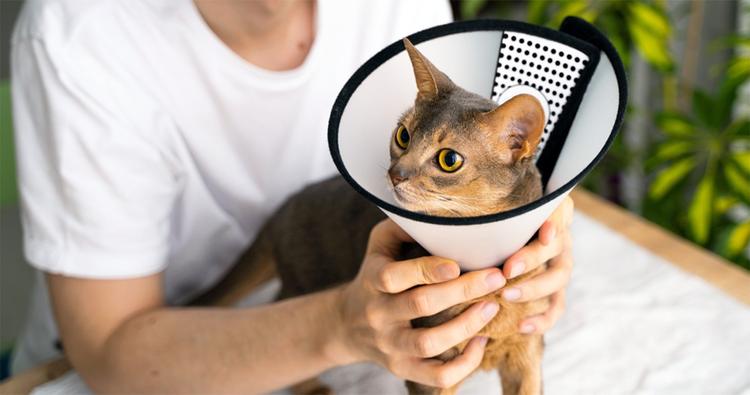Can You Adopt an Ear-Tipped Cat?
Ear-tipped cats might be friendly — but they shouldn’t always come home with you. Learn what their ears indicate, and when it’s okay to adopt them.
Ear-tipped cats might be friendly — but they shouldn’t always come home with you. Learn what their ears indicate, and when it’s okay to adopt them.
by Janelle Leeson, | June 20, 2024

Diego Grandi / Shutterstock
Have you ever spotted a friendly outdoor cat with a clipped ear and wondered if they’d make a good pet? Their tipped ear indicates they’ve been neutered/spayed and vaccinated, but this doesn’t necessarily mean they’re up for adoption.
“Most ear-tipped cats you see outdoors are already being cared for by multiple people in the neighborhood,” says Leah Long, Regional Senior Specialist at Best Friends Animal Society. Rather than removing healthy ear-tipped cats from their communities, she suggests checking with local animal shelters and rescue organizations for adoptable cats, some of which may also have tipped ears.
Read on to learn why some cats have tipped ears, as well as when and how you can adopt an ear-tipped cat.
A cat with the tip of one ear removed (typically the left ear) is called an ear-tipped cat. While having a tipped ear may look and sound a bit strange, Long emphasizes that a tipped ear is a good sign: These are healthy community cats.
The tipped ear indicates a cat has been through a Trap-Neuter-Return (TNR) program, which means a feral or friendly community cat has been humanely trapped, spayed or neutered, vaccinated, and then returned to their outdoor home.
“This ear tip lets community members and animal welfare staff know that healthy community cats do not need to go to a shelter or rescue,” Long says, “because they have already received the services they need.”
Ear tipping is performed while cats are under anesthesia for their spay or neuter, so they don’t feel any pain. Once the procedure is done, it tends to heal quickly without complications. The portion of the ear that is removed is small and doesn’t affect a cat’s hearing or ability to communicate with other cats via body language.
A tipped ear is the universal sign that a cat has been through a TNR program. The snip tells everyone which cats have already been spayed/neutered and vaccinated, and which cats still need care. This helps prevent unwanted litters which can lead to overpopulation and decreases the spread of disease, keeping the whole cat colony healthy.
If a colony cat seems happy and healthy outdoors, they’re likely a part of a TNR cat community that’s being fed by members of the community. They might not adjust well to indoor life, so returning them to their colony after medical care is the kindest option.
Thinking of adopting a friendly, ear-tipped cat? Adopting a cat from your local rescue or shelter is the best option. Here’s why.
Not all ear-tipped cats have pet parents. But they’re not all up for grabs, either.
Healthy, outdoor ear-tipped cats: Long suggests that you leave them be. There are likely multiple people in the community who care for them.
Injured or sick outdoor ear-tipped cats: Contact your shelter or talk to neighbors who care for community cats for help if they’re unwell.
Ear-tipped cats at your local shelter: Sometimes, cats with tipped ears can’t be returned to the outdoors after being vaccinated and spayed/neutered. If they’re friendly, these cats are put up for adoption, while feral or semi-feral cats typically enter working-cat programs.
Possibly. Not all ear-tipped cats are strays. Long explains that sometimes cats who have a home but spend time outdoors also go through the TNR program. Microchipping your cat and outfitting them in a collar with ID tags helps prevent this confusion.
Outdoor cats with tipped ears have different degrees of socialization and experience than indoor cats. This is one reason it’s best to adopt ear-tipped cats from your local shelter rather than scooping them off the street.
“Many outdoor or community cats have always lived in their neighborhood and know exactly where they are,” Long says, adding that it’s where they want to stay.
Adopting a cat from the shelter means a cat is:
Healthy
Spayed or neutered
Vaccinated
Friendly and enjoys life indoors
Even the friendliest shelter cat, ear-tipped or not, needs a slow introduction to their new home and family, as well as time to adjust to their new life.
“All ear-tipped cats who have gone through a TNR program have received the rabies vaccine and many programs also provide the FVRCP vaccine,” Long says.
Not all ear-tipped cats are strays. Long explains that the term “stray” often refers to cats who live outside, but this can also mean that the cat has been lost or abandoned. “Many outdoor or community cats have always lived in their neighborhood and know exactly where they are,” she says. When part of a well-managed colony, ear-tipped cats are considered to live under the care of community members.
Typically, clipping of the left ear indicates a cat has been through a TNR program and is spayed/neutered and vaccinated. Long adds that, in other parts of the world, cats would be clipped on the left or right side depending on their sex, but this isn’t common practice nowadays.
If an outdoor cat with a tipped ear appears healthy and happy, Long says it’s best to leave them be. “For adoptable felines in need of rehoming,” she says, “check websites such as Adopt a Pet.”

Janelle Leeson is a Portland, Oregon-based freelance writer. Her work has been featured in magazines such as Inside Your Dog’s Mind, Inside Your Cat’s Mind, and Paw Print, as well online at Insider Reviews, NBC Select, Shop Today, PetMD, and Daily Paws. She has two adventure cats, a flock of urban chickens, and a soon-to-be-husband who doesn’t mind housing the occasional foster cat — or five.

Adoption Advice

Rehome

Behavior & Training

Foster & Volunteer
During the warmer months, kitten births skyrocket — and it has a dramatic effect on shelters

Rehome
Nobody wants to part with their beloved pet — and you don’t have to. Here are some practical solutions to consider before assuming your cat isn’t working out.


Adoption Advice
Here’s what you should know about cat vaccines.

Adoption Advice
Here is why spaying or neutering your cat is important, and what to expect.

Adoption Advice
A step-by-step guide on how to adopt a cat — from where to begin looking to what the adoption process entails to how to prepare your home for your new pet.

Adoption Advice
Indoor life isn’t for every cat. Working-cat programs offer a happy, productive alternative.

Adoption Advice
Are you wondering which type of cat will match your brand of human personality? Read on for some helpful advice.

Behavior & Training
Is your cat hiding? Don’t worry, it’s totally normal. Here’s how to help them adjust.